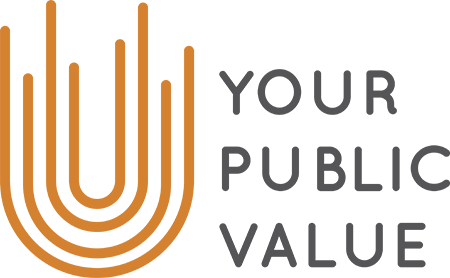Your Public Value invites experts to discuss the most pressing issues of our times, such as transparency in supply chains and the role of Blockchain. We asked KellyAnn Tsai, Marketing Director at Transparency One, to explain why increased transparency throughout supply chains is so needed to customers, society and the environment, and how the cloud-based Business-to-Business social network application that Transparency One developed can connect global supply chains. Here’s what she tells us:
“Imagine knowing the story behind every item in your home. You would know more about the products you buy: who made them, where they come from, what they are made of, their environmental and social impact… It is possible with supply chain transparency and the Blockchain technology that have set high standards for brands and retailers around the world, paving the way for a new and improved shopping experience.
Just what is supply chain transparency? At its core, it is easy to define: the supply chain for any product—what it’s made of, where it was made, who made it—is fully transparent and made known to shoppers. With transparency, businesses have a unique opportunity to contribute positively to society by revealing the stories behind their products. But to provide real value, companies should aim to achieve complete, in-depth supply chain transparency.
To provide real value for consumers, businesses must go beyond their “tier 1” direct suppliers and identify all of their suppliers for every component in a product, down to the very source (farm, field, mine, etc.). Real consumer value means not only sharing where the denim fabric for a pair of jeans comes from. It also means knowing your whole supply chain: Who spun the fabric? Who supplied the thread? What are the buttons made of? Where are the cotton farms located?
This complete end-to-end supply chain transparency provides both consumers and businesses with real and trusted value. How can a brand claim their product is environmentally friendly if they don’t know the sustainability practices of the farm providing their raw materials? Supply chain transparency arms businesses with the means to improve their supply chains and demonstrate that their products are 100% safe, ethical, and sustainable. Consumers can then rest assured that the claims they read on a product’s package are indeed true.
What about blockchain?
Blockchain technology—a database that records digital transactions in secure and transparent way—is often championed as a way to achieve supply chain transparency, due to three major characteristics:
- Blockchains are public. Everyone participating in the blockchain can view the transactions, which are stored in “blocks.”
- Blockchains are decentralized. No single party owns the blockchain. All participants first must reach a consensus (via an algorithm) before any transaction can be added to the chain. This means greater trust of the data stored in the blockchain.
- Blockchain is secure. Data in the blocks cannot be altered and blocks can only be added to the chain but never removed—making a blockchain database highly secure.
This is obviously very appealing for supply chain transparency, which depends on companies providing reliable and trustworthy information. With blockchain we have the potential to create a complete, detailed, and permanent record of every transaction related to a supply chain, automatically. Because they are decentralized and viewable by everyone in the supply chain—and also the public—blockchains ensure that businesses cannot disguise the truth and ultimately leads to greater product transparency.
In addition, every transaction added to the blockchain is immutable and thereby ensures greater security and reduces instances of fraud. If a problem or doubt about a product arises, such as bacterial contamination or an instance of forced labor, supply chain partners can “go back in time” to pinpoint the exact moment when the supply chain was changed and who is responsible.
Blockchain has an important role to play in achieving transparent supply chains and ensuring customers know where their products come from. However, a big question remains: how is the supply chain information gathered in the first place? To store anything in the blockchain, we must first collect information about the product. While blockchain technology can store and secure data, the technology itself does not address this issue.
Collaboration before blockchain
The first step to achieving supply chain transparency is not blockchain technology, but collaboration between all partners in the supply chain. Blockchain can, of course, play an important role in ensuring transparency—but collaboration must come first to build the supply chain network and collect the necessary data.
In today’s globalized world, collaborating with supply chain partners is no easy feat. To address this, Transparency-One developed a cloud-based Business-to-Business social network application, much like Facebook or LinkedIn, to connect global supply chains. Brands and retailers join the platform and invite their direct suppliers to join and input their data. These direct suppliers then invite their suppliers to join, a process which cascades down the supply chain until the source of the raw material has been reached. The end result is a fully mapped and digitized supply chain that can then be verified, analyzed, and improved for better sustainability and social responsibility.
By connecting the supply chain in this fashion businesses can achieve meaningful, end-to-end supply chain transparency from the finished product all the way down to raw material. It is only then that blockchain should enter the picture to do what it does best: provide additional security and transparency to ensure supply chain data is not hidden, deleted or tampered with.
Transparency in the real world
While the importance of transparent supply chains is well understood and accepted by many companies, the reality is that businesses may hesitate to disclose proprietary or sensitive information, creating a potential roadblock in the quest for transparency.
The Transparency One solution addresses this concern by allowing every user of the platform to choose the “visibility level” for each of their products —in other words, how much information they share with their supply chain partners. This option ultimately increases transparency by encouraging reluctant businesses to share at least a portion of their supply chain data, rather than none at all.
But before blockchain can be fully deployed, the industry needs to determine the right level of visibility to satisfy both consumer and business needs. How much supply chain information should be shared with consumers? Does the public need to access every detail for blockchain to deliver on its promise for transparency? Or is it enough for companies to store their data in the blockchain without revealing everything to the public?
Blockchain is championed as a game changer for supply chain transparency, and rightfully so. However, it is not a turnkey solution. Businesses first need to identify and map their complete supply chains, from source to store, to gather the relevant data about their products. Expectations and standards need to be established on how much supply chain information should be shared both with consumers and between business partners. But once these have been defined, blockchain technology can be deployed as a powerful tool to help ensure greater security and transparency in supply chains.
The era of transparency is dawning. New technology solutions are enabling companies to map and digitize their supply chains. When combined with blockchain technology to increase data security, businesses can become much more transparent about their products.”
Your Public Value invites experts to share their views on the future of ethical business, business integrity, public value, and on business approaches to implement the UN Sustainable Development Goals. Please add your comment to the post of KellyAnn Tsai or contact us to share your thoughts on our blog page.


2 Comments. Leave new
INTERESTING CONTENT USEFUL TO ALL THE BLOCKCHAIN ASPIRANTS!
Useful Information Provided!!